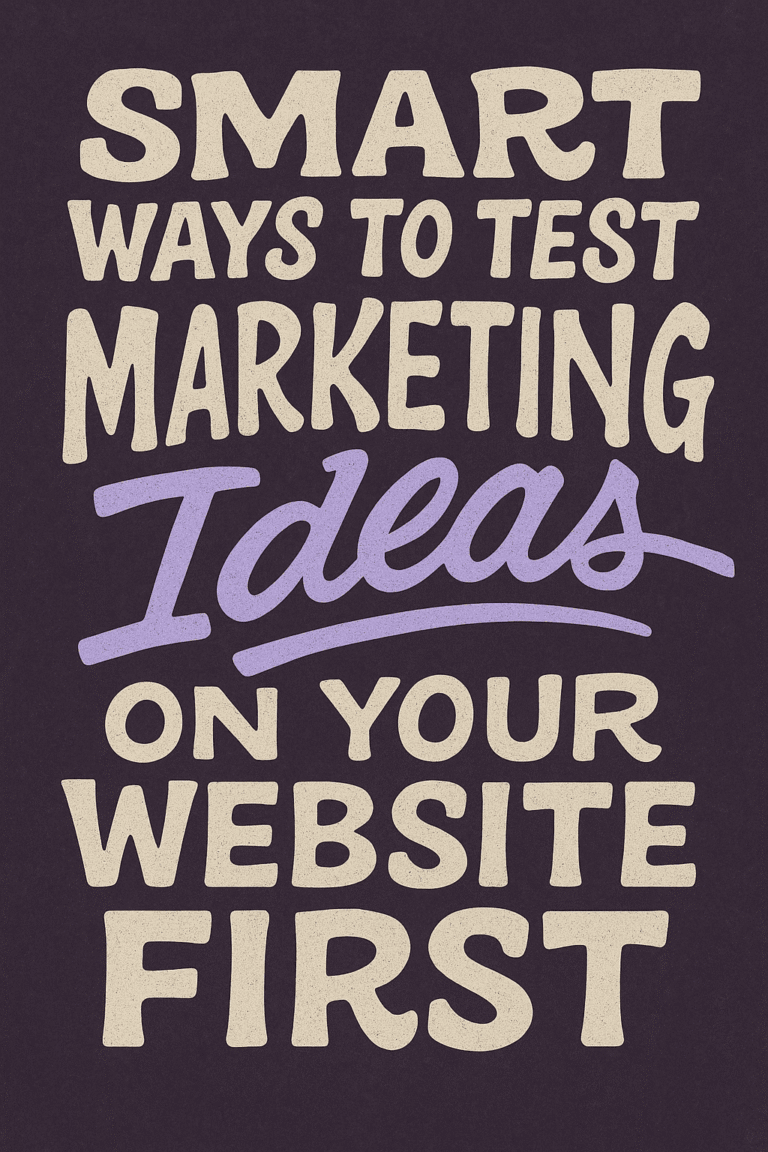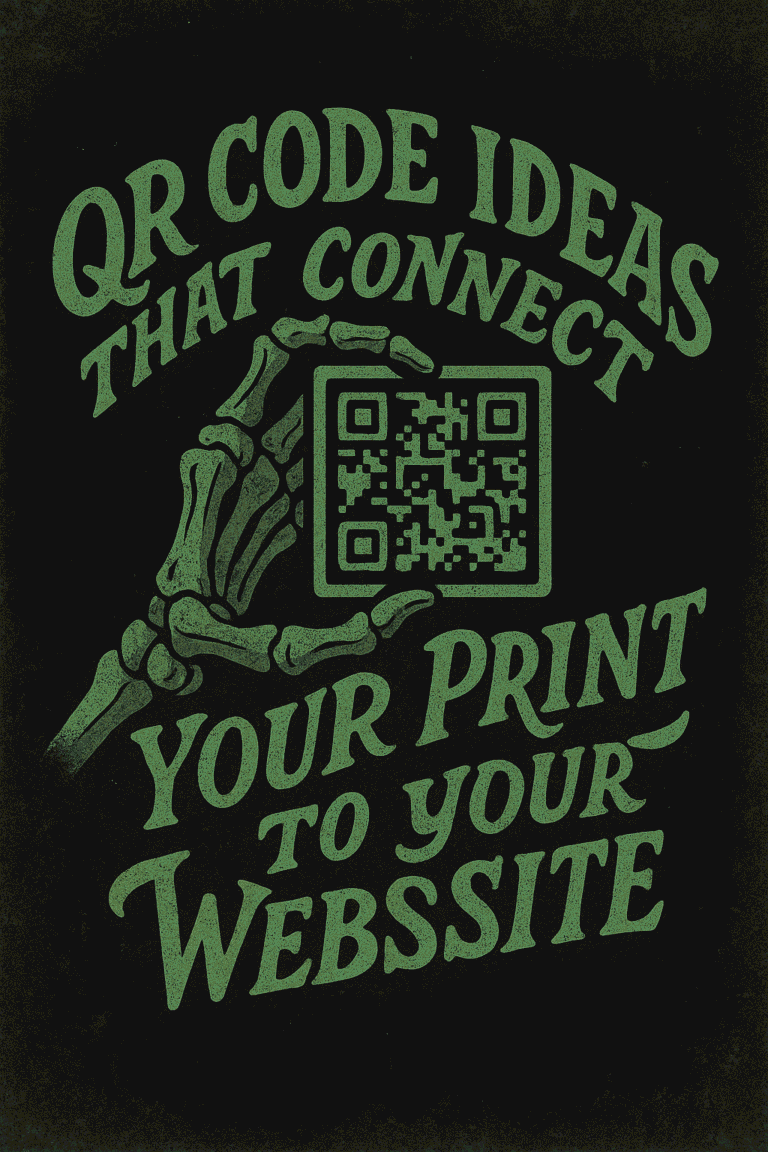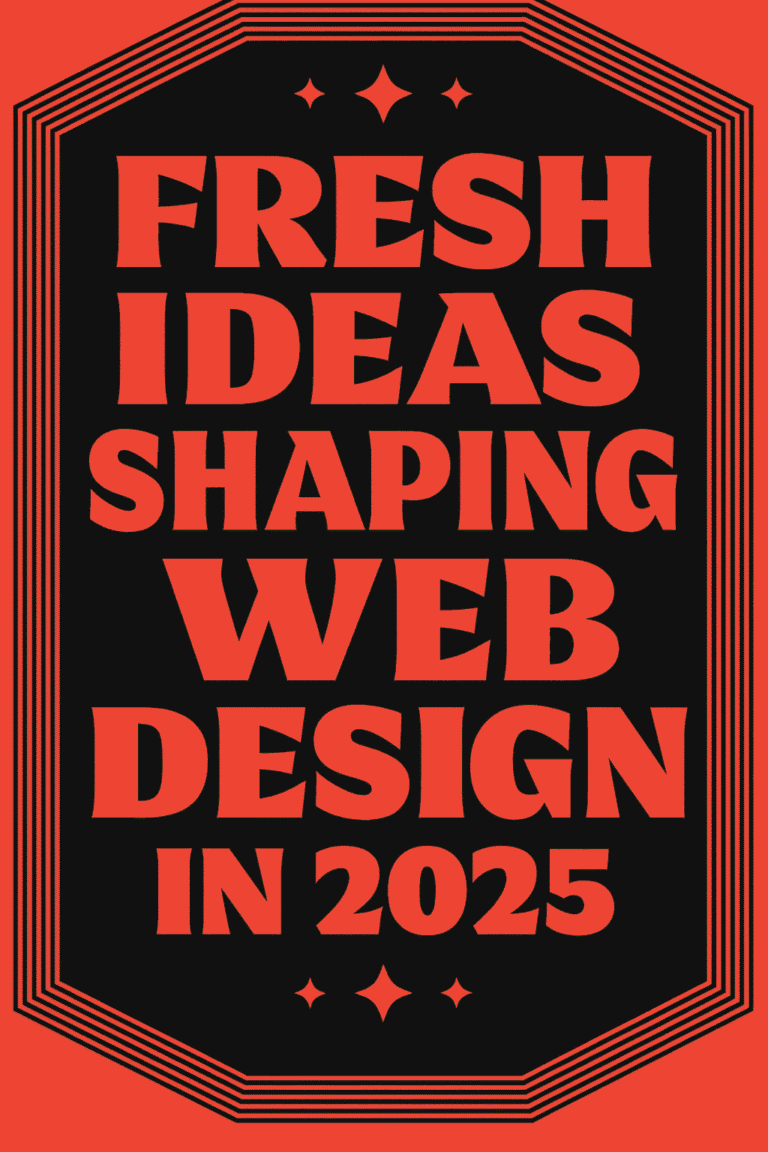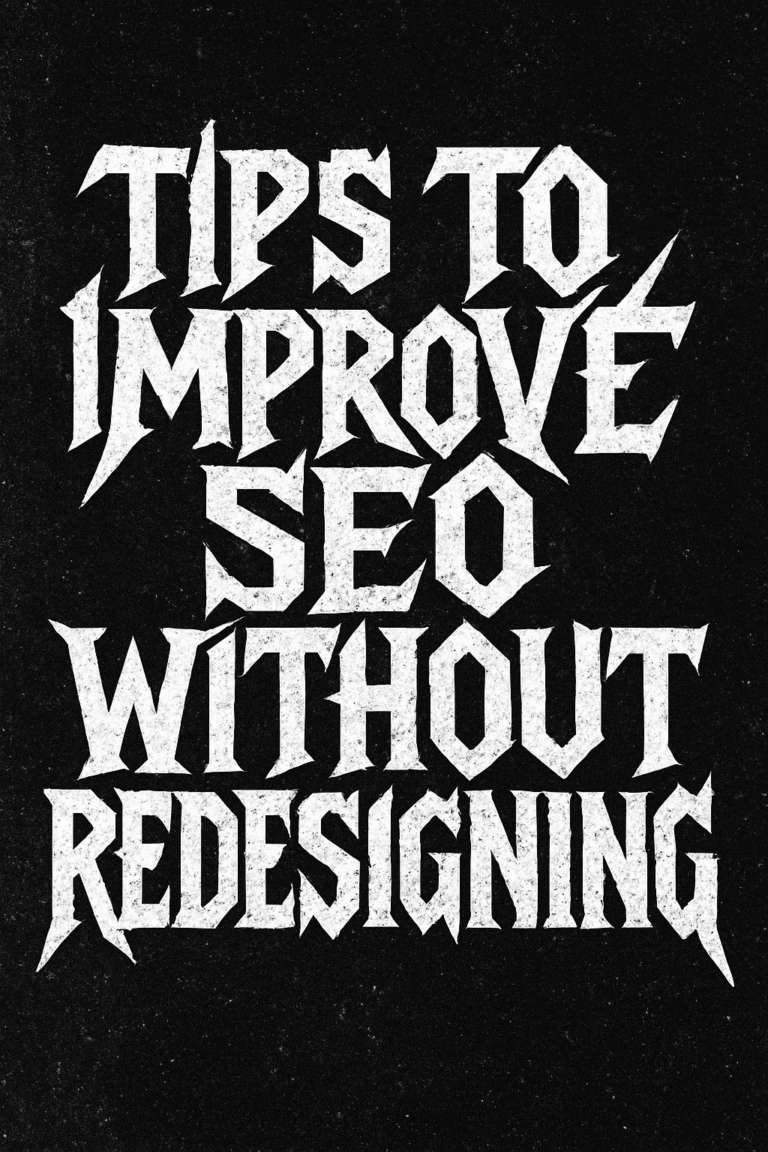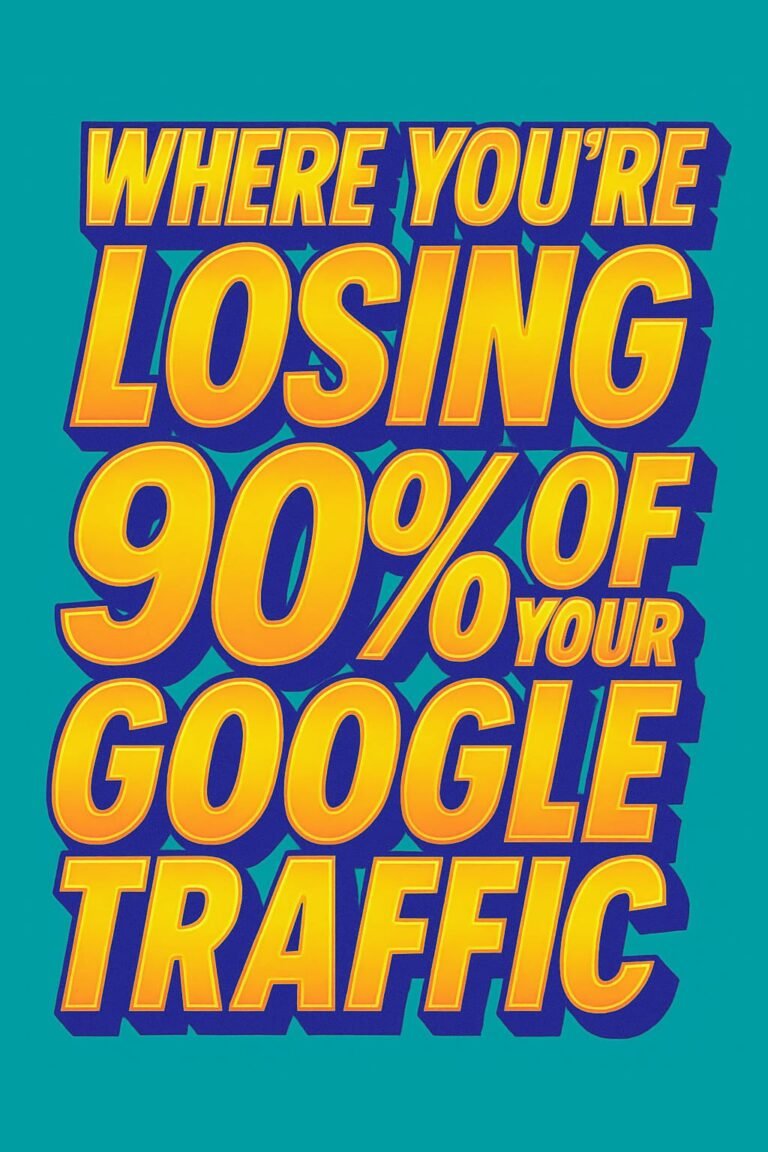
When a potential customer visits your website, their experience determines whether they’ll make a purchase or leave empty-handed. While marketing strategies may drive traffic, what truly turns visitors into buyers is how your website guides and engages them. Smart web design doesn’t just focus on aesthetics; it creates a seamless, intuitive journey that leads to conversions.
In this post, we’ll break down practical, effective web design strategies that can transform your site into a conversion engine, helping you turn casual visitors into loyal customers. By optimizing the user experience, creating clear pathways, and eliminating friction points, you can ensure that your website isn’t just attracting attention—it’s driving results. Let’s explore how smart web design can boost your sales and business growth.
1) First Impressions Matter
Fast-loading websites aren’t just a luxury—they’re a necessity. Studies consistently show that if your site takes more than three seconds to load, a significant portion of visitors will abandon it. Slow load times can frustrate users and send them to a competitor, no matter how great your products or services are.
Here’s how to boost your site speed:
- Compress Your Images: Large image files are one of the biggest culprits for slow websites. Use tools like TinyPNG to compress images without losing quality.
- Use Lazy Loading: Lazy loading ensures that images only load when they are visible on the user’s screen, preventing unnecessary data from loading in the background.
- Enable Browser Caching: By storing elements of your website on the visitor’s device, you ensure faster load times on repeat visits.
- Minify Code: Clean up unnecessary spaces, characters, and comments in your HTML, CSS, and JavaScript to reduce file sizes and improve speed.
- Choose a Reliable Hosting Provider: Opt for hosting services known for fast, reliable performance. Consider using Content Delivery Networks (CDNs) to distribute your site’s content globally and reduce latency.
Faster websites not only create a better user experience but also rank higher in search engines, improving your visibility and attracting more potential customers.
2) Make It Easy to Explore
When visitors arrive at your website, they shouldn’t feel lost. Clear, intuitive navigation is crucial for helping users find what they’re looking for quickly. If your site is difficult to navigate or has too many layers, visitors will get frustrated and leave.
Here’s how to create a navigation system that works:
- Use Clear Labels: Keep your menu items simple and descriptive. Avoid industry jargon that may confuse users. Instead, stick to terms they easily understand, like “Shop,” “About,” or “Contact.”
- Limit Menu Options: Too many choices can overwhelm visitors. Stick to 5-7 primary navigation links that represent the key areas of your website. Use submenus sparingly.
- Include a Search Function: For larger websites, a search bar is essential. Make it easy for users to find exactly what they need without scrolling through pages of content.
- Sticky Navigation: Consider using sticky or fixed navigation bars that remain at the top of the screen as users scroll down. This ensures that they can easily access important links without having to scroll back to the top.
By simplifying navigation, you create a smooth user experience that helps visitors move toward the products or services they’re interested in with minimal effort.
3) Direct the User’s Next Step
A website without strong calls-to-action is like a salesperson who never asks for the sale. CTAs are crucial because they guide visitors toward the next step in their journey, whether it’s learning more about your product, adding an item to their cart, or contacting your team.
Tips for designing effective CTAs:
- Use Action-Oriented Language: Phrases like “Get Started,” “Buy Now,” or “Claim Your Free Trial” are direct and encourage users to take immediate action.
- Make CTAs Stand Out: Your CTAs should be visually distinct from the rest of the page. Use contrasting colors and bold fonts to ensure they catch the user’s eye.
- Place CTAs Strategically: Position CTAs in key areas, like at the top of the page, after product descriptions, or at the end of blog posts. Ensure they are always visible as the user navigates the page.
- Reduce Friction: Make it as easy as possible for visitors to complete an action. If you’re asking users to sign up or check out, keep the process simple with minimal form fields and distractions.
By having clear, action-driven CTAs throughout your site, you can guide visitors naturally toward making a purchase or getting in touch with your team.
4) Build Credibility
Trust is one of the most important factors in turning visitors into buyers. When people visit your site, they want to feel confident that they’re making the right choice, especially if they’re unfamiliar with your brand. Including trust signals can help build that confidence.
Effective trust signals to include:
- Customer Testimonials: Display positive reviews from real customers, ideally near your CTAs. Testimonials can offer social proof that others have had a great experience with your brand.
- Security Badges: If you collect payment or personal information, use recognizable security badges to reassure customers that their data is protected.
- Trustworthy Payment Options: Include familiar and trusted payment gateways to offer customers a sense of security when making a transaction.
- Client Logos: If you’ve worked with recognizable brands or organizations, display their logos on your site to build credibility.
These trust signals show visitors that your business is reliable, professional, and committed to protecting their interests, encouraging them to take the next step.
5) Tap Into the Mobile Market
With mobile devices making up more than half of all web traffic, ensuring your site is fully optimized for mobile is crucial. A poorly designed mobile experience can drive visitors away in seconds.
Here’s how to optimize for mobile:
- Responsive Design: Your website should automatically adjust to fit any screen size, whether it’s a phone, tablet, or desktop. This includes adjusting images, text, and buttons to be easily readable and clickable on smaller devices.
- Large, Tappable Buttons: Make sure that buttons and links are easy to tap with a finger on mobile devices. Tiny buttons can be frustrating to use on touchscreens.
- Streamlined Content: Mobile users are often looking for quick information. Keep content concise and easy to digest, and minimize unnecessary elements that clutter the page.
- Fast Loading Time: Mobile users expect fast performance. Compress images and reduce page load times to ensure visitors aren’t stuck waiting.
Optimizing for mobile ensures that you aren’t missing out on potential customers who are browsing on the go, giving them a seamless experience regardless of how they access your site.
6) Guide the Eye Where It Matters
Visual hierarchy is all about organizing the elements of your website in a way that directs users’ attention to the most important parts. A well-designed visual hierarchy helps users easily scan the page and quickly find key information, leading to higher engagement and conversions.
Techniques for effective visual hierarchy:
- Use Size to Show Importance: Larger elements naturally draw more attention. Make headlines and CTAs larger than other text to emphasize their importance.
- Leverage White Space: Don’t clutter your page with too much content. Using white space between elements gives your design room to breathe and helps guide users’ focus to key areas.
- Color Contrast: Use contrasting colors to highlight important elements like CTAs. Bright colors for buttons or links can make them stand out, while neutral backgrounds help create a clean design.
- Directional Cues: Use visual cues like arrows or lines to subtly direct users toward CTAs or key areas of the page. This can help guide them through the intended flow of your site.
By creating a clear visual hierarchy, you ensure that visitors are naturally drawn to the most important parts of your website, leading them toward conversion points.
7) Less Friction, More Sales
For eCommerce websites, the checkout process can make or break a sale. A complicated or lengthy checkout can cause customers to abandon their carts. To turn visitors into buyers, the checkout process needs to be as smooth and intuitive as possible.
Here’s how to streamline checkout:
- Allow Guest Checkout: Forcing visitors to create an account can be a major deterrent. Offering a guest checkout option removes that friction and speeds up the purchase process.
- Minimize Form Fields: Only ask for the necessary information. The fewer fields a customer has to fill out, the faster they can complete their purchase.
- Provide Multiple Payment Options: Give users the flexibility to pay in their preferred way, whether it’s with a credit card, PayPal, or other digital payment methods.
- Progress Indicators: Show customers where they are in the checkout process by using a progress bar or step indicators. This reduces uncertainty and keeps them motivated to complete the purchase.
- Offer Free Shipping: If possible, offer free shipping or make it clear how much more the customer needs to spend to qualify for free shipping. This can be a powerful incentive for completing the purchase.
Simplifying the checkout process reduces barriers and increases the likelihood of visitors completing their transactions, turning them into buyers.
8) Tell a Story Through Design
Images, videos, and other visual elements are powerful tools for keeping visitors engaged and guiding them toward a purchase. However, it’s important to use high-quality visuals that are directly tied to your brand message.
Best practices for using visuals:
- Showcase Your Products Clearly: For eCommerce sites, use high-resolution images of your products from multiple angles. Allow users to zoom in for a closer look, and include product videos if possible.
- Use Video to Explain Complex Concepts: Explainer videos are a great way to simplify complex ideas or showcase how your product or service works. Videos can increase engagement and encourage visitors to spend more time on your site.
- Tell a Story: Use visuals that align with your brand’s story and values. Whether it’s through images of happy customers or lifestyle shots, visuals can help evoke the emotions that drive purchasing decisions.
- Ensure Fast Load Times: While high-quality visuals are important, make sure they are optimized to load quickly. Compress large images and use formats like WebP to reduce file sizes without compromising quality.
The right visuals can enhance the user experience and help visitors feel more connected to your brand, ultimately leading them toward a purchase decision.
9) Constantly Improve
What works for one audience may not work for another, so it’s important to continually test and refine your web design elements. A/B testing allows you to compare two versions of a page or element to see which performs better in terms of conversions.
Here’s how to approach A/B testing:
- Test One Element at a Time: Whether it’s the color of your CTA buttons, the placement of an image, or the wording of a headline, focus on one element at a time to measure its impact on conversion rates.
- Gather Data Over Time: Run tests long enough to gather meaningful data. Short-term tests may not provide a complete picture of how users are interacting with your site.
- Analyze the Results: Use tools like Google Analytics or Hotjar to track user behavior and conversion rates. Adjust your design based on what the data reveals.
Regular testing and tweaking will help you refine your website and maximize its conversion potential, turning more visitors into buyers over time.
10) Create Tailored Experiences
Personalization is one of the most effective ways to engage visitors and turn them into buyers. By delivering content and recommendations tailored to each user, you can create a more relevant experience that drives conversions.
Examples of personalization:
- Dynamic Content: Show personalized product recommendations based on the user’s browsing history or previous purchases.
- Location-Based Offers: Use the visitor’s location to display local promotions or store information.
- Tailored Messaging: Adjust your site’s messaging to reflect the visitor’s interests, such as showing specific benefits for different user segments (e.g., new vs. returning customers).
Personalized experiences create a sense of connection and relevance, making users more likely to engage and convert.
Turning Design into Sales
Turning visitors into buyers requires more than just a visually appealing website—it’s about creating a user-centric experience that guides visitors toward a purchase in a logical, intuitive way. By optimizing for speed, simplifying navigation, refining your CTAs, and building trust, you can create a web design that converts.
Each of the strategies discussed here, from improving site speed to leveraging personalization, is a step toward turning your website into a powerful tool for business growth. By continually testing and improving your web design, you’ll ensure your site remains not only functional but effective in driving conversions and revenue.
The next time you review your website, think beyond just aesthetics. Consider how every design decision impacts the user’s journey and how it can move them from visitor to buyer.
